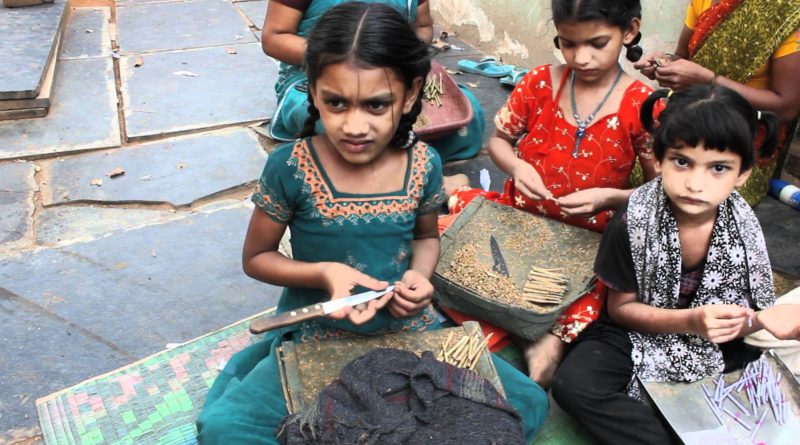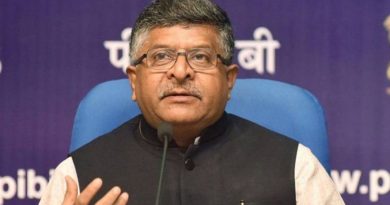बालिका बाल-श्रम मानवाधिकार का खुला उल्लंघन
Girl Child Labour विश्व व्यापी चिंता # उत्तराखण्ड में बाल श्रम स्थिति चिंताजनक#बाल मजदूरी भारत में बड़ा सामाजिक मुद्दा बनता जा रहा है जिसे नियमित आधार पर हल करना चाहिए। ये केवल सरकार की जिम्मेदारी नहीं है बल्कि इसे सभी सामाजिक संगठनों, मालिकों, और अभिभावकों द्वारा भी समाधित करना चाहिए। ये मुद्दा सभी के लिये है जोकि व्यक्तिगत तौर पर सुलझाना चाहिए, क्योंकि ये किसी के भी बच्चे के साथ हो सकता है। हिमालयायुूके न्यूज पोर्टल (www.himalayauk.org) Leading Digital Newsportal. Execlusive Report by CS JOSHI- EDITOR ; एक्सक्लूूसिव रिपोर्ट
उत्तराखण्ड में बाल श्रम पर सख्ती से रोक लगाने की बात हवा हवाई रही, इस वित्तीय वर्ष में अभी तक कोई बाल श्रमिक चिह्नित ही नहीं कर पाये है। भारत सरकार ने उत्तराखंड के सभी जिलों में राष्ट्रीय बाल श्रम परियोजना शुरू किए जाने के संबंध में श्रम विभाग से प्रस्ताव मांगेे गये थे। इस परियोजना को मंजूरी मिलने पर प्रदेश के सभी 13 जनपदों में बाल श्रम स्कूल खोले जाएंगे, ताकि चिह्नित बाल श्रमिकों को बाल श्रम स्कूल में पुनर्वास के लिए भेजा जा सके।सिडकुल में शहरों में भी खतरनाक और गैर खतरनाक व्यवसायों में बाल श्रमिक काम करते हुए देखे जा सकते हैं। निर्माण कार्य से जुड़े श्रमिकों के बच्चों की पढ़ाई के लिए उत्तराखंड भवन एवं अन्य सन्निर्माण कर्मकार कल्याण बोर्ड के कोष में 8 अरब से ज्यादा धनराशि जमा है, परन्तु बोर्ड का ढांचा ही गठित नही है- आफिस ही नही है, स्टाफ नही है, ऐसे में अंदाजा लगाया सकता है कि उत्तराखण्ड में बाल श्रम कल्याण में असफलता ही हाथ लगी है-
भयंकर गरीबी और खराब स्कूली मौके की वजह से बहुत सारे विकासशील देशों में बाल मजदूरी बेहद आम बात है। बाल मजदूरी की उच्च दर अभी भी 50 प्रतिशत से अधिक है जिसमें 5 से 14 साल तक के बच्चे विकासशील देशों में काम कर रहे है। कृषि क्षेत्र में बाल मजदूरी की दर सबसे उच्च है जो ज्यादातर ग्रामीण और अनियमित शहरी अर्थव्यवस्था में दिखाई देती है जहाँ कि अधिकतर बच्चे अपने दोस्तों के साथ खेलने और स्कूल भेजने के बजाए प्रमुखता से अपने माता-पिता के द्वारा कृषि कार्यों में लगाये गये है।
बाल मजदूरी का मुद्दा अब अंतर्राष्ट्रीय हो चुका है क्योंकि देश के विकास और वृद्धि में ये बड़े तौर पर बाधक बन चुका है। स्वस्थ बच्चे किसी भी देश के लिये उज्जवल भविष्य और शक्ति होते है अत: बाल मजदूरी बच्चे के साथ ही देश के भविष्य को भी नुकसान, खराब तथा बरबाद कर रहा है।
भारतवर्ष में प्रारंभ से ही बच्चों को ईश्वर का रूप माना जाता है। ईश्वर के बाल रूप यथा ‘बाल गणेश’, ‘बाल गोपाल’, ‘बाल कृष्णा’, ‘बाल हनुमान’ आदि इसके प्रत्यक्ष उदाहरण हैं। भारत की धरती ध्रुव, प्रह्लाद, लव-कुश एवं अभिमन्यु जैसे बाल चरित्रों से पटी हुई है। आज की तस्वीर इससे बिलकुल अलग है। बच्चों का वर्तमान दृश्य इससे भिन्न है। बच्चों का भविष्य अंधकारमय होता जा रहा है। गरीब बच्चे सबसे अधिक शोषण का शिकार हो रहे हैं। गरीब बच्चियों का जीवन भी अत्यधिक शोषित है। छोटे-छोटे गरीब बच्चे स्कूल छोड़कर बाल-श्रम हेतु मजबूर हैं।
बाल-श्रम, मानवाधिकार का खुला उल्लंघन है। यह बच्चों के मानसिक, शारीरिक, आत्मिक, बौद्धिक एवं सामाजिक हितों को प्रभावित करता है। बच्चे आज के परिवेश में घरेलू नौकर का कार्य कर रहे हैं। वे होटलों, कारखानों, सेवा-केन्द्रों, दुकानों आदि में कार्य कर रहे हैं, जिससे उनका बचपन पूर्णतया प्रभावित हो रहा है।
किसी भी क्षेत्र में बच्चों द्वारा अपने बचपन में दी गई सेवा को बाल मजदूरी कहते है। इसे गैर-जिम्मेदार माता-पिता की वजह से, या कम लागत में निवेश पर अपने फायदे को बढ़ाने के लिये मालिकों द्वारा जबरजस्ती बनाए गए दबाव की वजह से जीवन जीने के लिये जरुरी संसाधनों की कमी के चलते ये बच्चों द्वारा स्वत: किया जाता है, इसका कारण मायने नहीं रखता क्योंकि सभी कारकों की वजह से बच्चे बिना बचपन के अपना जीवन जीने को मजबूर होते है। बचपन सभी के जीवन में विशेष और सबसे खुशी का पल होता है जिसमें बच्चे प्रकृति, प्रियजनों और अपने माता-पिता से जीवन जीने का तरीका सीखते है। सामाजिक, बौद्धिक, शारीरिक, और मानसिक सभी दृष्टीकोण से बाल मजदूरी बच्चों की वृद्धि और विकास में अवरोध का काम करता है। बाल मजदूरी बच्चों से लिया जाने वाला काम है जो किसी भी क्षेत्र में उनके मालिकों द्वारा करवाया जाता है। ये एक दबावपूर्णं व्यवहार है जो अभिवावक या मालिकों द्वारा किया जाता है। बचपन सभी बच्चों का जन्म सिद्ध अधिकार है जो माता-पिता के प्यार और देख-रेख में सभी को मिलना चाहिए, ये गैरकानूनी कृत्य बच्चों को बड़ों की तरह जीने पर मजबूर करता है। इसके कारण बच्चों के जीवन में कई सारी जरुरी चीजों की कमी हो जाती है जैसे- उचित शारीरिक वृद्धि और विकास, दिमाग का अनुपयुक्त विकास, सामाजिक और बौद्धिक रुप से अस्वास्थ्यकर आदि।
इसकी वजह से बच्चे बचपन के प्यारे लम्हों से दूर हो जाते है, जो हर एक के जीवन का सबसे यादगार और खुशनुमा पल होता है। ये किसी बच्चे के नियमित स्कूल जाने की क्षमता को बाधित करता है जो इन्हें समाजिक रुप से देश का खतरनाक और नुकसान दायक नागरिक बनाता है। बाल मजदूरी को पूरी तरह से रोकने के लिये ढ़ेरों नियम-कानून बनाने के बावजूद भी ये गैर-कानूनी कृत्य दिनों-दिन बढ़ता ही जा रहा है।
भारत के संविधान, 1950 का अनुच्छेद 24 स्पष्ट करता है कि 14 वर्ष से कम उम्र के किसी भी बच्चे को ऐसे कार्य या कारखाने इत्यादि में न रखा जाये जो खतरनाक हो। कारखाना अधिनियम, बाल अधिनियम, बाल श्रम निरोधक अधिनियम आदि भी बच्चों के अधिकार को सुरक्षा देते हैं किन्तु इसके विपरीत आज की स्थिति बिलकुल भिन्न है।
पिछले कुछ वर्षों से भारत सरकार एवं राज्य सरकारों की पहल इस दिशा में सराहनीय है। उनके द्वारा बच्चों के उत्थान के लिए अनेक योजनाओं का प्रारंभ किया गया हैं, जिससे बच्चों के जीवन व शिक्षा पर सकारात्मक प्रभाव दिखे। शिक्षा का अधिकार भी इस दिशा में एक सराहनीय कार्य है। इसके बावजूद बाल-श्रम की समस्या अभी भी एक विकट समस्या के रूप में विराजमान है।
इसमें कोई शक नहीं कि बाल-श्रम की समस्या किसी भी देश व समाज के लिए घातक है। बाल-श्रम पर पूर्णतया रोक लगनी चाहिए। बाल-श्रम की समस्या जड़ से समाप्त होना अति आवश्यक है।
बाल मजदूरी इंसानियत के लिये अपराध है जो समाज के लिये श्राप बनता जा रहा है तथा जो देश के वृद्धि और विकास में बाधक के रुप में बड़ा मुद्दा है। बचपन जीवन का सबसे यादगार क्षण होता है जिसे हर एक को जन्म से जीने का अधिकार है। बच्चों को अपने दोस्तों के साथ खेलने का, स्कूल जाने का, माता-पिता के प्यार और परवरिश के एहसास करने का, तथा प्रकृति की सुंदरता का आनंद लेने का पूरा अधिकार है। जबकि केवल लोगों( माता-पिता, मालिक ) की गलत समझ की वजह से बच्चों को बड़ों की तरह जीवन बिताने पर मजबूर होना पड़ रहा है। जीवन के हर जरुरी संसाधनों की प्राप्ति के लिये उन्हें अपना बचपन कुर्बान करना पड़ रहा है।
माता-पिता अपने बच्चों को परिवार के प्रति बचपन से ही जिम्मेदार बनाना चाहते है। वो ये नहीं समझते कि उनके बच्चों को प्यार और परवरिश की जरुरत होती है, उन्हें नियमित स्कूल जाने तथा अच्छी तरह से बड़ा होने के लिये दोस्तों के साथ खेलने की जरुरत है। बच्चों से काम कराने वाले माँ-बाप सोचते है कि बच्चे उनके जागीर होते है और वो उन्हें अपने हिसाब से इस्तेमाल करते है। वास्तव में हर माता-पिता को ये समझना चाहिए कि देश के प्रति भी उनकी कुछ जिम्मेदारी है। देश के भविष्य को उज्जवल बनाने के लिये उन्हें अपने बच्चों को हर तरह से स्वस्थ बनाना चाहिए।
माता-पिता को परिवार की जिम्मेदारी खुद से लेनी चाहिए तथा अपने बच्चों को उनका बचपन प्यार और अच्छी परवरिश के साथ जीने देना चाहिए। पूरी दुनिया में बाल मजदूरी के लिए मुख्य कारण गरीबी, माता-पिता, समाज, कम आय, बेरोजगारी, खराब जीवन शैली तथा समझ, सामाजिक न्याय, स्कूलों की कमी, पिछड़ापन, और अप्रभावशाली कानून है जो देश के विकास को प्रत्यक्षत: प्रभावित कर रहा है।
बचपन, इंसान की जिंदगी का सबसे हसीन पल, न किसी बात की चिंता और न ही कोई जिम्मेदारी। बस हर समय अपनी मस्तियों में खोए रहना, खेलना-कूदना और पढ़ना। लेकिन सभी का बचपन ऐसा हो यह जरूरी नहीं। बड़े शहरों के साथ-साथ आपको छोटे शहरों में भी हर गली नुक्कड़ पर कई राजू-मुन्नी-छोटू-चवन्नी मिल जाएंगे जो हालातों के चलते बाल मजदूरी की गिरफ्त में आ चुके हैं। और यह बात सिर्फ बाल मजदूरी तक ही सीमित बाल मजदूर की इस स्थिति में सुधार के लिए सरकार ने 1986 में चाइल्ड लेबर एक्ट बनाया जिसके तहत बाल मजदूरी को एक अपराध माना गया तथा रोजगार पाने की न्यूनतम आयु 14 वर्ष कर दी। इसी के साथ सरकार नेशनल चाइल्ड लेबर प्रोजेक्ट के रूप में बाल मजदूरी को जड़ से खत्म करने के लिए कदम बढ़ा चुकी है। इस प्रोजेक्ट का उद्देश्य बच्चों को इस संकट से बचाना है। जनवरी 2005 में नेशनल चाइल्ड लेबर प्रोजेक्ट स्कीम को 21 विभिन्न भारतीय प्रदेशों के 250 जिलों तक बढ़ाया गया। आज सरकार ने आठवीं तक की शिक्षा को अनिवार्य और निशुल्क कर दिया है, लेकिन लोगों की गरीबी और बेबसी के आगे यह योजना भी निष्फल साबित होती दिखाई दे रही है। बच्चों के माता-पिता सिर्फ इस वजह से उन्हें स्कूल नहीं भेजते क्योंकि उनके स्कूल जाने से परिवार की आमदनी कम हो जाएगी।
5 से 14 साल तक के बच्चों का अपने बचपन से ही नियमित काम करना बाल मजदूरी कहलाता है। विकासशील देशों मे बच्चे जीवन जीने के लिये बेहद कम पैसों पर अपनी इच्छा के विरुद्ध जाकर पूरे दिन कड़ी मेहनत करने के लिए मजबूर है। वो स्कूल जाना चाहते है, अपने दोस्तों के साथ खेलना चाहते है और दूसरे अमीर बच्चों की तरह अपने माता-पिता का प्यार और परवरिश पाना चाहते है लेकिन दुर्भाग्यवश उन्हें अपनी हर इच्छाओं का गला घोंटना पड़ता है।
विकासशील देशों में, खराब स्कूलिंग मौके, शिक्षा के लिये कम जागरुकता और गरीबी की वजह से बाल मजदूरी की दर बहुत अधिक है। ग्रामीण क्षेंत्रों में अपने माता-पिता द्वारा कृषि में शामिल 5 से 14 साल तक के ज्यादातर बच्चे पाए जाते है। पूरे विश्व में सभी विकासशील देशों में बाल मजदूरी का सबसे मुख्य कारण गरीबी और स्कूलों की कमी है।
बचपन हर एक के जीवन का सबसे खुशनुमा और जरुरी अनुभव माना जाता है क्योंकि बचपन बहुत जरुरी और दोस्ताना समय होता है सीखने का। अपने माता-पिता से बच्चों को पूरा अधिकार होता है खास देख-रेख पाने का, प्यार और परवरिश का, स्कूल जाने का, दोस्तों के साथ खेलने का और दूसरे खुशनुमा पलों का लुफ्त उठाने का। बाल मजदूरी हर दिन न जाने कितने अनमोल बच्चों का जीवन बिगाड़ रहा है। ये बड़े स्तर का गैर-कानूनी कृत्य है जिसके लिये सजा होनी चाहिये लेकिन अप्रभावी नियम-कानूनों से ये हमारे आस-पास चलता रहता है।
समाज से इस बुराई को जड़ से मिटाने के लिये कुछ भी बेहतर नहीं हो रहा है। कम आयु में उनके साथ क्या हो रहा है इस बात का एहसास करने के लिये बच्चे बेहद छोटे, प्यारे और मासूम है। वो इस बात को समझने में अक्षम है कि उनके लिये क्या गलत और गैर-कानूनी है, बजाए इसके बच्चे अपने कामों के लिये छोटी कमाई को पाकर खुश रहते है। अनजाने में वो रोजाना की अपनी छोटी कमाई में रुचि रखने लगते है और अपना पूरा जीवन और भविष्य इसी से चलाते है।
अपने देश के लिये सबसे जरुरी संपत्ति के रुप में बच्चों को संरक्षित किया जाता है जबकि इनके माता-पिता की गलत समझ और गरीबी की वजह से बच्चे देश की शक्ति बनने के बजाए देश की कमजोरी का कारण बन रहे है। बच्चों के कल्याण के लिये कल्याकारी समाज और सरकार की ओर से बहुत सारे जागरुकता अभियान चलाने के बावजूद गरीबी रेखा से नीचे के ज्यादातर बच्चे रोज बाल मजदूरी करने के लिये मजबूर होते है।
किसी भी राष्ट्र के लिये बच्चे नए फूल की शक्तिशाली खुशबू की तरह होते है जबकि कुछ लोग थोड़े से पैसों के लिये गैर-कानूनी तरीके से इन बच्चों को बाल मजदूरी के कुँएं में धकेल देते है साथ ही देश का भी भविष्य बिगाड़ देते है। ये लोग बच्चों और निर्दोष लोगों की नैतिकता से खिलवाड़ करते है। बाल मजदूरी से बच्चों को बचाने की जिम्मेदारी देश के हर नागरिक की है। ये एक सामाजिक समस्या है जो लंबे समय से चल रहा है और इसे जड़ से उखाड़ने की जरुरत है।
देश की आजादी के बाद, इसको जड़ से उखाड़ने के लिये कई सारे नियम-कानून बनाए गये लेकिन कोई भी प्रभावी साबित नहीं हुआ। इससे सीधे तौर पर बच्चों के मासूमियत का मानसिक, शारीरिक, सामाजिक और बौद्धिक तरीके से विनाश हो रहा है। बच्चे प्रकृति की बनायी एक प्यारी कलाकृति है लेकिन ये बिल्कुल भी सही नहीं है कि कुछ बुरी परिस्थितियों की वजह से बिना सही उम्र में पहुँचे उन्हें इतना कठिन श्रम करना पड़े।
बाल मजदूरी एक वैशविक समस्या है जो विकासशील देशों में बेहद आम है। माता-पिता या गरीबी रेखा से नीचे के लोग अपने बच्चों की शिक्षा का खर्च वहन नहीं कर पाते है और जीवन-यापन के लिये भी जरुरी पैसा भी नहीं कमा पाते है। इसी वजह से वो अपने बच्चों को स्कूल भेजने के बजाए कठिन श्रम में शामिल कर लेते है। वो मानते है कि बच्चों को स्कूल भेजना समय की बरबादी है और कम उम्र में पैसा कमाना परिवार के लिये अच्छा होता है। बाल मजदूरी के बुरे प्रभावों से गरीब के साथ-साथ अमीर लोगों को भी तुरंत अवगत कराने की जरुरत है। उन्हें हर तरह की संसाधनों की उपलब्ता करानी चाहिये जिसकी उन्हें कमी है। अमीरों को गरीबों की मदद करनी चाहिए जिससे उनके बच्चे सभी जरुरी चीजें अपने बचपन में पा सके। इसको जड़ से मिटाने के लिये सरकार को कड़े नियम-कानून बनाने चाहिए।
##Girl Child Labour
Girls do enormous work at home and at the fields. They carry water fetch by fetch, collect fuel wood, cook, clean, wash, take care of siblings and act like little mothers. They also work relentlessly, in all seasons, as agricultural labourers. Several hundreds of girls also work in stone and lime quarries in this area. They carry head loads of earth and rubble from the pits at least fifty feet down the risky, narrow stairways. At the end of the day these tired girls just collapse with body aches and pains about which they cannot even complain.
 In a survey conducted by the MV Foundation of the families of girl children engaged as farm labourers in cotton seed farms, it was found that while girls worked 29.4 days in a month on wage work, the women worked 22.2 days and the men 18.6 days. Further the contribution of the girl to the family income was 28.7%, of the women 28.3% and of the men 42.8% during that month. It has also been found that the girls are being engaged in new forms of exploitative relationship vis-à-vis the employers. Thus for instance in a conventional situation girls in the area always worked on a daily wage basis as agricultural labourers. They seldom worked as bonded labourers against an advance taken by the family. It was usually the boys who were pledged against a loan taken as bonded labourers. However it is now quite common to see girls working to clear off the advance taken by the parents. This practice is growing, especially in areas of intensive commercial crops such as cotton, oilseeds, seed farms and so on. There is a growing demand for girl children. Indeed, the decision to take up a venture on farming is made only if there is an assured supply of girls in place. The entrepreneurs even go to the schools to cajole them to join as workers. The employers have also designed various methods of interaction with the girls and their families which ensure that there is a guaranteed supply of labour. To tie the girls to the employers they are given incentives and gifts for good production and performance. They are shown videos of popular movies near the work place, taken to the cinema theatre once every month. They have also ensured that the girls worked on their farms by circulating a myth that the farms cotton seed grow well only if touched by girl children especially those who have not attained their puberty. There does not seem to be any break to the dependence of the family and the employers as well on these girls.
In a survey conducted by the MV Foundation of the families of girl children engaged as farm labourers in cotton seed farms, it was found that while girls worked 29.4 days in a month on wage work, the women worked 22.2 days and the men 18.6 days. Further the contribution of the girl to the family income was 28.7%, of the women 28.3% and of the men 42.8% during that month. It has also been found that the girls are being engaged in new forms of exploitative relationship vis-à-vis the employers. Thus for instance in a conventional situation girls in the area always worked on a daily wage basis as agricultural labourers. They seldom worked as bonded labourers against an advance taken by the family. It was usually the boys who were pledged against a loan taken as bonded labourers. However it is now quite common to see girls working to clear off the advance taken by the parents. This practice is growing, especially in areas of intensive commercial crops such as cotton, oilseeds, seed farms and so on. There is a growing demand for girl children. Indeed, the decision to take up a venture on farming is made only if there is an assured supply of girls in place. The entrepreneurs even go to the schools to cajole them to join as workers. The employers have also designed various methods of interaction with the girls and their families which ensure that there is a guaranteed supply of labour. To tie the girls to the employers they are given incentives and gifts for good production and performance. They are shown videos of popular movies near the work place, taken to the cinema theatre once every month. They have also ensured that the girls worked on their farms by circulating a myth that the farms cotton seed grow well only if touched by girl children especially those who have not attained their puberty. There does not seem to be any break to the dependence of the family and the employers as well on these girls.
It is in this situation that the MV Foundation has attempted to intervene. It was clear that an atmosphere had to be built to make it possible for the girls to abandon work and join into schools. Parents too had to be given confidence that they were taking the right decision in sending their daughters to schools. An assurance had to be given that their children would be given all the attention and care. More important the message that the one and only alternative to the drudgery and discrimination of girls is through education had to be made explicit. To elaborate, the education of girls through attendance in full time schools is crucial to liberate the girls from their daily chores. Education is an intrinsic value in itself needing no further justification. Yet in the case of girl children the spin off effects it has on their lives is immense. It enables them cope with the problem of gender discrimination. It extends the age of their marriage. They no longer would be child brides. They are better nourished and healthy as they no longer work. In fact they become better equipped to deal with adverse situations. Schooling also provides a break in the habits and culture which stultifies the growth of the girl child. It opens up options and possibilities new dreams and a newer future.
There are several interventions – such as training in health, awareness about reproductive health care, critique of patriarchal values and gender discrimination – being suggested for bettering the conditions of girl children. It is argued here that these programmes would make better impact if girls accessed education and were literate. More than anything schools provide leisure, time and space of their own. Thus when in school they are no longer exploited. They no longer have to work for others. They are discovering themselves and their potentialities. They acquire self esteem and confidence. This is their first step towards gender equality and breakdown of stereotypes. This is the beginning of their role as individuals in their own right.
##
Child Labour is the practice of having children engage in economic activity, on part- or full-time basis. The practice deprives children of their childhood, and is harmful to their physical and mental development. Poverty, lack of good schools and growth of informal economy are considered as the important causes of child labour in India. The 1998 national census of India estimated the total number of child labour, aged 4–15, to be at 12.6 million, out of a total child population of 253 million in 5–14 age group. 2009–10 a nationwide survey found child labour prevalence had reduced to 4.98 million children (or less than 2% of children in 5–14 age group).[4] The 2011 national census of India found the total number of child labour, aged 5–14, to be at 4.35 million,[5]and the total child population to be 259.64 million in that age group.[6] The child labour problem is not unique to India; worldwide, about 217 million children work, many full-time.
Indian law specifically defines 64 industries as hazardous and it is a criminal offence to employ children in such hazardous industries.[8] In 2001, an estimated 1% of all child workers, or about 120,000 children in India were in a hazardous job.[9] Notably, Constitution of India prohibits child labour in hazardous industries (but not in non-hazardous industries) as a Fundamental Right under Article 24. UNICEF estimates that India with its larger population, has the highest number of labourers in the world under 14 years of age, while sub-saharan African countries have the highest percentage of children who are deployed as child labour. International Labour Organisation estimates that agriculture at 60 percent is the largest employer of child labour in the world,[14] while United Nation’s Food and Agriculture Organisation estimates 70% of child labour is deployed in agriculture and related activities.[15] Outside of agriculture, child labour is observed in almost all informal sectors of the Indian economy
Companies including Gap, Primark, Monsanto have been criticised for child labour in their products. The companies claim they have strict policies against selling products made by underage children, but there are many links in a supply chain making it difficult to oversee them all.[21] In 2011, after three years of Primark’s effort, BBC acknowledged that its award-winning investigative journalism report of Indian child labour use by Primark was a fake. The BBC apologised to Primark, to Indian suppliers and all its viewers. In December 2014, the U.S. Department of Labor issued a List of Goods Produced by Child Labor or Forced Labor and India figured among 74 countries where significant incidence of critical working conditions has been observed. Unlike any other country, India was attributed 23 goods the majority of which is produced by child labour in the manufacturing sector. Article 24 of India’s constitution prohibits hazardous child labour. Additionally, various laws and the Indian Penal Code, such as the Juvenile Justice (care and protection) of Children Act-2000, and the Child Labour (Prohibition and Abolition) Act-1986 provide a basis in law to identify, prosecute and stop child labour in India.




